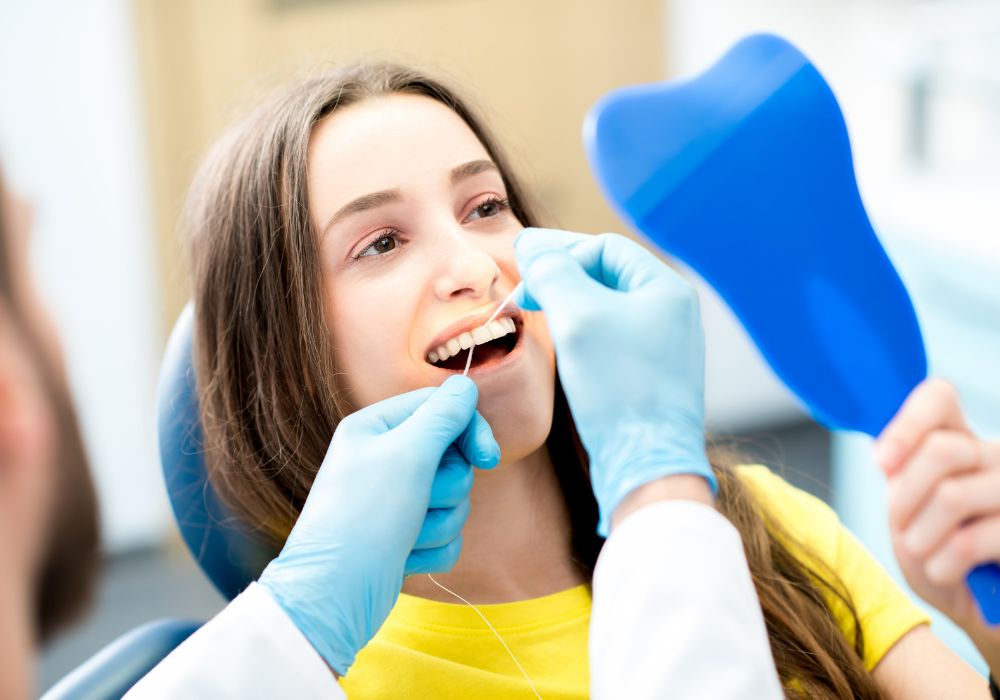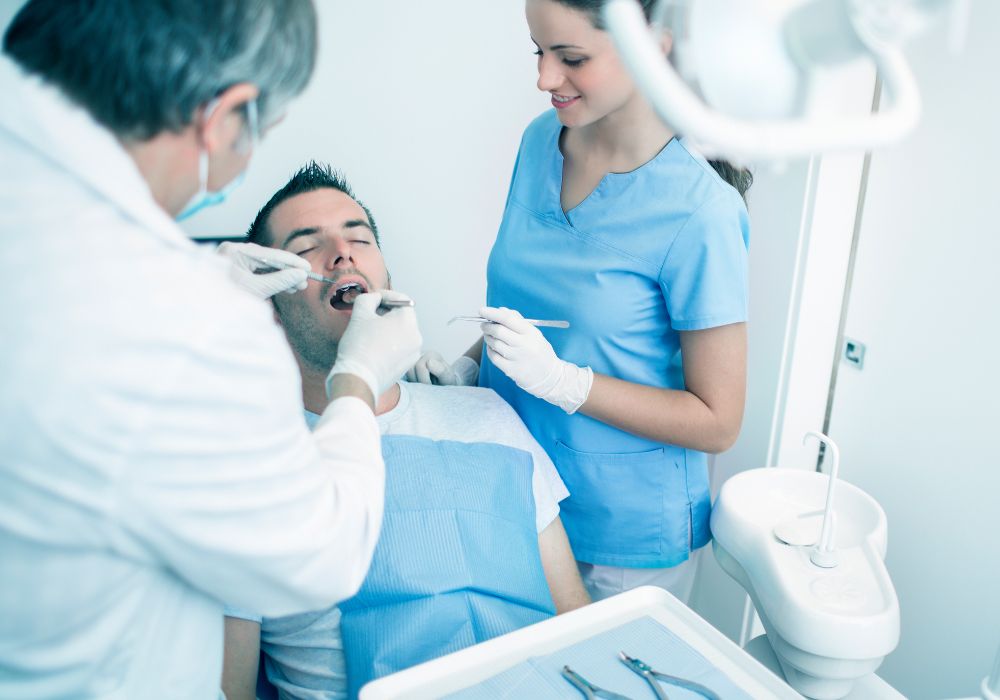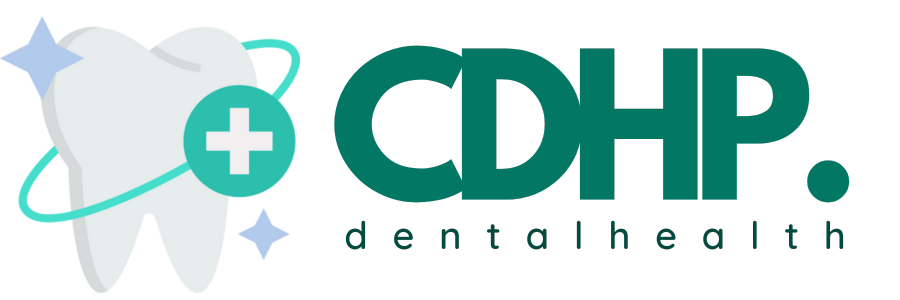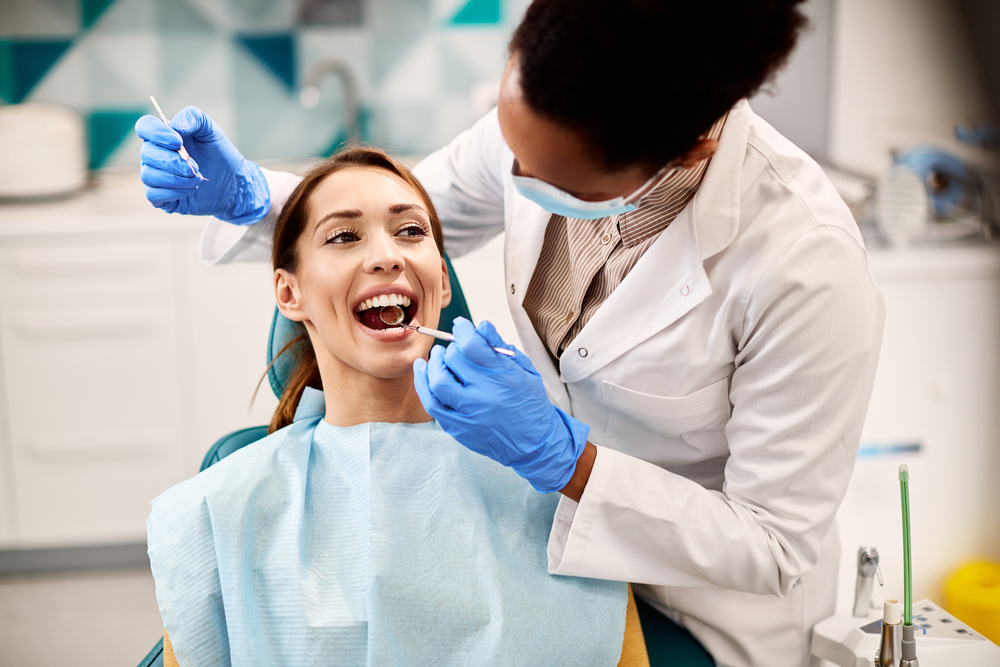You may be surprised to discover that, even with regular brushing and flossing, you need professional dental cleaning at least twice a year. Some may say this is just an extra cost to scam you out of money, but the evidence begs to differ.
Table of Contents
A dental cleaning costs about $100 to $200 in most areas, although some metropolitan spaces may charge more. Dental insurance often covers this completely as part of your routine dental care, but deep cleanings and scalings may surpass this coverage.
There’s a lot to consider when researching dental cleaning, from how price is determined to whether it’s worth it to pay for in the end. This guide expands on the benefits of dental cleaning for your overall oral health and why it’s such a necessary expense.
How Much Is a Dental Cleaning & What Affects the Cost?
It’s important to understand that the estimate that we give is a very generic number. In reality, the cost of a dental cleaning ranges from $0 to $1,800. The cost differs depending on:
- Where you live or where your dentists’ office is located
- How well you’ve maintained your teeth and their current condition
- Any issuance or dental discount you may have
There are also additional, miscellaneous fees that may pile onto your final bill.
Dentist Location
Location may be one of the leading factors in the wide range of dental costs you witness. You see this in other areas of commerce, such as grocery or gas bills, but it’s a little different with health costs.
The rental costs in an area may affect the cost of keeping up with the clinic. More expensive rent will always lead to higher overhead costs, and ultimately higher prices for routine care like cleanings, exams, and x-rays.
Usually, rural areas have lower dental costs than heavily populated cities. This isn’t always the case, and you should always call and shop around before assuming you can’t afford the care you need.
Current Condition and Dental History
A new patient who has foregone preventative care for the past decade will usually have more work to do than someone who hasn’t skipped a six-month appointment since they were a toddler. While cleanings are routine, the dental hygienist will need to spend more time and effort to remove excessive plaque and tartar buildup.
Even with regular care, you may have genetic dental conditions that require special attention or more frequent deep cleaning. You can usually keep costs low by staying on top of your dental visits, but this isn’t a guarantee.
Insurance or Dental Discount Plans
People with dental insurance plans or discount plans will usually be able to minimize (if not eradicate) the out-of-pocket costs when it comes to dental cleaning. Insurance companies and dental savings plans see routine care as a benefit to their business, and they’re highly likely to extend dental coverage in this area.
The cost of a teeth cleaning is a drop in the bucket compared to procedures it can prevent, like tooth extraction or root canals.
Additional Fees
The average cost of teeth cleaning does not include room for additional costs that occur on a case-by-case basis.
Some examples include:
- Initial exam fees
- X-rays
- Fluoride treatment
- Prescriptions
Sedation isn’t standard for dental cleanings, but those who start sweating at the thought of the dentist’s office may make use of something like nitrous oxide to stay calm.
Types of Dental Cleanings

There are three general types of dental cleanings, each with their own costs.
- Standard adult teeth cleanings: $100 to $200; usual dental cleaning to be performed twice a year
- Scaling and root planing: $1,000 to $1,800; deep cleaning for those with buildup or certain dental issues
- Periodontal maintenance: $150 to $300; deepest cleaning done after scaling and root planing; done 3 to 4 time a year
What you need will depend on the condition of your mouth and your risk of developing greater issues in the future.
Standard Adult Teeth Cleaning
Prophylaxis (meaning “to prevent disease”) teeth cleaning is performed regularly to ensure optimal dental health. This type of cleaning is your standard preventative care performed on otherwise clean, healthy teeth.
In these sessions, plaque and tartar are removed from all sides of the teething with a dental scaler and water. There are no extra considerations or tools needed.
Gross Debridement Cleaning Before Prophylactic Cleaning
If it’s your first time to the dentist in a long time and you have heavy buildup, you may need a gross debridement cleaning before any progress may be made. This is a more heavy-duty cleaning that takes care of copious amounts of hardened tartar.
Gross debridement cleaning doesn’t necessarily mean you need the more intensive cleaning sessions outlined below, but it’s an additional cost to consider. It’s like scrubbing and sweeping a floor before the final wipe down.
Scaling and Root Planing
Deep cleaning is obviously more invasive, and it’s reserved for instances when there’s heavy buildup or a concern for gum health. These cleanings stop the development of issues like gum disease or bone loss, and may need multiple sessions to complete.
For example, deep cleaning with gingivitis may only take a single session, while periodontitis is more involved and may be completed in quadrants. Individuals may require anesthetic for more severe cases.
Scaling is more advanced removal of plaque and tartar from the surfaces as well as the gum pockets. This addresses concerns of bacteria and inflammation. Root planing is then used to smooth the roots, reversing gum recession and eliminating the gum pockets.
Periodontal Maintenance
Periodontal maintenance adds to scaling and root planing, and it should be completed on a routine schedule. This treatment plan prevents the reoccurrence of extreme buildup and allows your dentist to monitor your progress.
Are Dental Cleanings Worth the Price?
Dental cleanings are worth the price. While they’re not the cheapest thing you may pay for, they’re vital to prevent issues that cost 10 times as much.
Even with responsible brushing and flossing practices, there is plenty of room for error. Food particles may make their way to the gumline where it’s difficult (if not impossible) for you to reach, and the subsequent bacteria will slowly pile up.
This is what leads to “out of the blue” issues like sensitivity or bad breath, hinting at what is to come. Since most cleanings can be done on the day of your 6-month checkup, there’s little reason to avoid them.
How to Save Money on Dental Cleanings?

While it’s a necessary procedure, we recognize that it may not fit into everyone’s budget. If you’re due for a dental cleaning but cannot afford it, consider options like:
- Dental schools
- Community health centers
- State programs
- Clinics that offer a sliding scale
Make sure you aren’t missing out on benefits offered through your employer or dental insurance and consider using any FSA or HSA benefits (if you have them).
Dental Schools
Many dental schools accept Medicaid, but they’re a low-cost option overall.
Dental schools need patients for their graduating students to practice on, but they would not charge the full amount since the practitioner has yet to get their license. All of these students are on-course for graduation, and they work alongside a board certified dentist as they perform your cleaning.
Check with dental schools in your area to see if they have any availability. They usually offer limited spots at certain times, depending on what students need to work on.
Community Health Centers
If you search “Your City/County” + “Community Health Center”, you will probably have at least one in your area. These are health centers that qualify for federal aid that discounts their procedures, allowing them to provide high-quality care for a fraction of the cost.
Expect the appointment options to be slim-pickings. You may need to book further in advance or have a flexible schedule to take advantage of these programs.
State Programs
Your state may offer assistance if you’re unemployed or fall below a certain income level. You may even be able to get your teeth checked out and cleaned at no cost.
These programs also inform you of pop-up programs in your area that offer free services. These don’t occur often and usually have a limited number of spots, but they’re a great resource for those in need.
Sliding Scale Dental Clinics
Most community health centers operate on a sliding scale, but you may find additional independent practices that do the same.
They assess your current financial situation (household income and those dependent on that income) and use the information to determine your expected contribution. While this is unlikely to bring you down to zero, it discounts your dental care to better fit your budget.
Conclusion
In most cases, dental cleaning will only cost about $100, and insurance is more than happy to absorb this cost. If you’re receiving care without insurance, keep in mind that this is a fraction of the cost to treat issues that routine cleaning prevents.
Make sure you contact dentists in your area before assuming that this is too much for you to handle. Costs value greatly even in a single city, and there are usually options for all budgets to ensure you receive the care you need.
Let us know if you have any further questions about what dental cleanings are or what goes into their cost!

